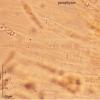
15-12-2025 15:48
 Danny Newman
Danny Newman
Melanospora cf. lagenaria on old, rotting, fallen

15-12-2025 15:54
 Johan Boonefaes
Johan Boonefaes
Unknown anamorph found on the ground in coastal sa

15-12-2025 21:11
 Hardware Tony
Hardware Tony
Small clavate hairs, negative croziers and IKI bb

15-12-2025 07:09
 Danny Newman
Danny Newman
indet. Rutstroemiaceae sp. on unk. fallen leavesMc

15-12-2025 07:05
 Danny Newman
Danny Newman
Pseudosclerococcum golindoi (det: Zotto)near Cosb

15-12-2025 11:49
 Danny Newman
Danny Newman
ITS sequences from the following two collections B

15-12-2025 12:34
 Danny Newman
Danny Newman
indet. Rhytismataceae on oak leafnear Purchase Roa

09-12-2025 12:06
 Andgelo Mombert
Andgelo Mombert
Bonjour,Je recherche l'article concernant Hypobryo
Hi to all
I need again your help with this fungus with subcuticular multi-perithecia growing together under the bark with their long necks converging, on an small branch of Carpinus betulus. Asci clavate 20-29 x 4-5, gradually tapering to a very slender, shortly stipitate, base. Paraphyses tapering, septate, much longer than the asci.
I feel it is close to Calosphaeria microsperma Ellis & Everh. that grows on Carpinus too, but the ascospores in the diagnosis seem to be smaller and no so boomerang-shaped .
Have you a better idea?
Thanks again
Hi Enrique,
Your fungus seems to be close to C. pulchella, except host which is usually Prunus for this species.
Have you read Barr - Mycologia 77 (1985) ?
Alain
Hi Alain
Many thanks but I don't think this fungus is C. pulchella (that the other hand seems to grow only on Prunus) because the ascospores are more allantoid, almost semicircular, and the asci are not so stipitate as show the images in the attached document.
Thanks again
Yes you're right, and ascospores seem too big for C. microsperma. But between north-american species and european species we have already seen differences.
What think ?
I can't help you more.
Alain
I don't know, Alain. Maybe this genus seems to be poorly studied...
Thanks a lot for your help

I am currently working on a key to the species of this genus and I can tell you, that this is not C. microsperma and probably even not Calosphaeria, but Eutypella, which seem to have several similar species with strongly bent spores. I am not at home now, but if you have you can look into the Rappaz paper dealing with 8 spores diatrypaceen.
If you want, I can also send you the key when I am ready with it, it will take me several hours and perhaps I am ready this evening.
regars,
björn
Hi Björn
Really it's surprising your idea because the perithecia are free, subepidermial and no stromatic. Do you think this is an Eutypella species?
Regards

its still not easy to say if its Calosphaeria or not, but after working with this genus there is only one species having an ascus tip like Eutypella species (C. dryina, which is probably not uncommon on Quercus, but looks quite different). Can you test the ascus in congo to see if the apparat is congophil? And probably also in IKI, perhaps something surprising happens.
regards,
björn
Yes,please, look at asci. They apparently don't fit with Eutypella's ones.
Alain
Hi Enrique,
Yes you shew asci, sorry. And indeed they fit better with Calosphaeria than Eutypella.
Perhaps your fungus is an undescribed Calosphaeria ?
Alain

Or else, you can of course send me this species and I will compare it with all my other Calosphaeria collections.
regards,
björn

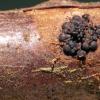
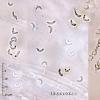
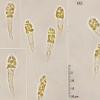
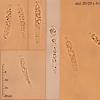
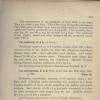
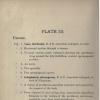
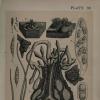
 New-genera-in-the-Calosphaeriales-0001.pdf
New-genera-in-the-Calosphaeriales-0001.pdf